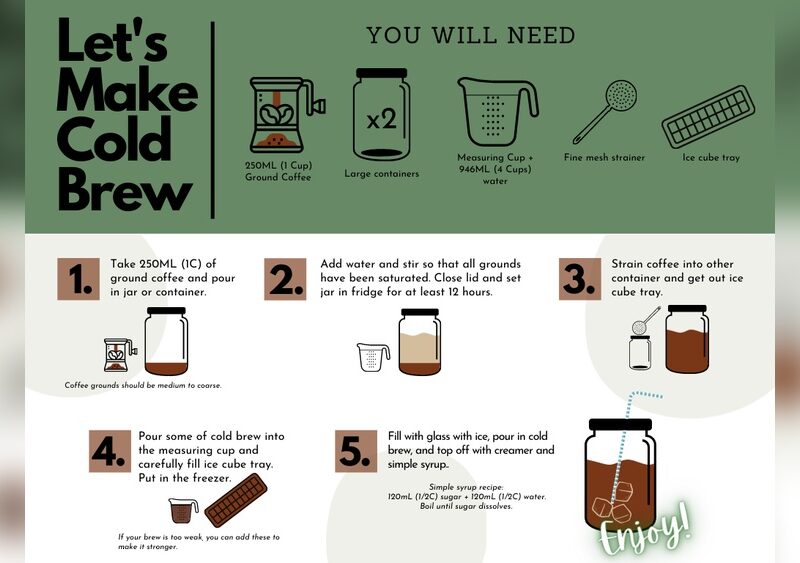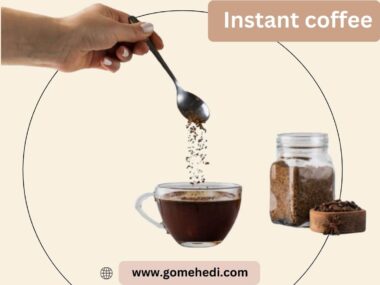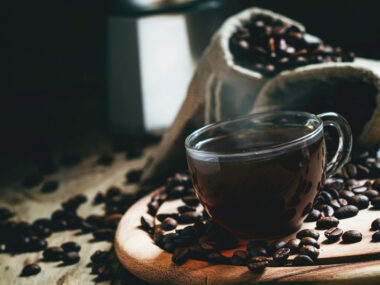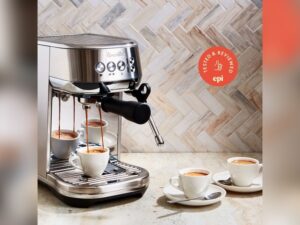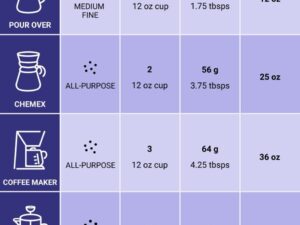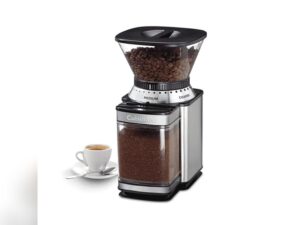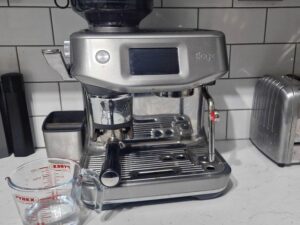Craving a smooth, refreshing coffee that wakes you up without the bitter taste? Making cold brew coffee at home is easier than you think.
You don’t need fancy machines or expensive beans. With just a few simple steps, you can enjoy a rich, delicious brew anytime you want. Keep reading, and you’ll discover how to create your perfect cup that saves you money and tastes better than store-bought versions.
Your mornings—and afternoons—are about to get a whole lot better.
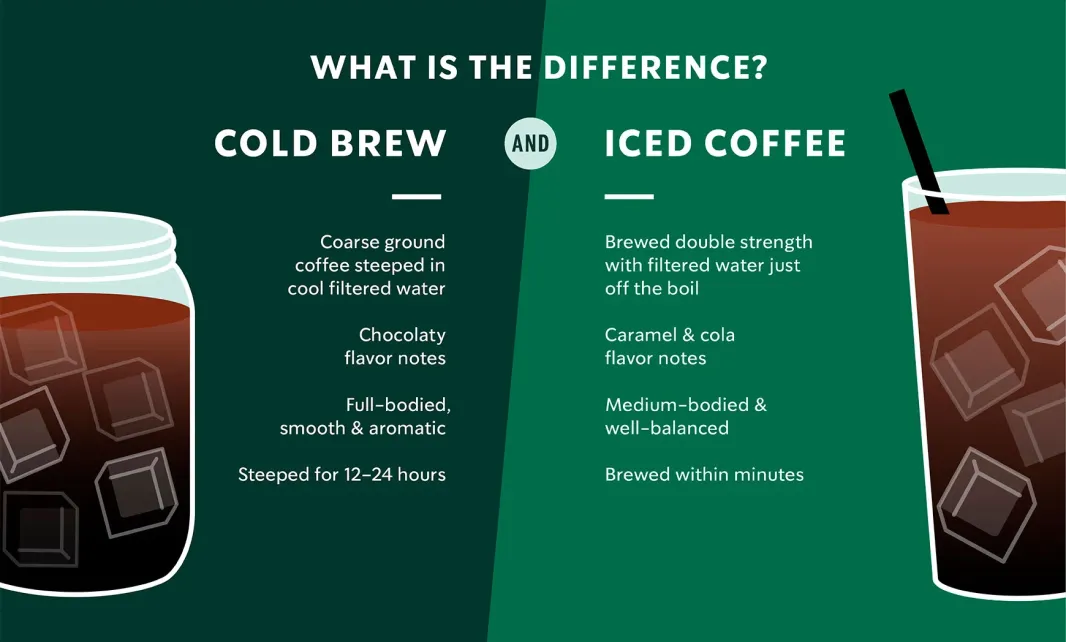
Credit: athome.starbucks.com
Choosing The Right Coffee Beans
Choosing the right coffee beans is key to making delicious cold brew coffee at home. The beans affect the flavor, strength, and smoothness of your brew. Different beans bring different tastes, from fruity and bright to rich and chocolatey. Picking the right type and grind size helps you get the best cold brew experience. This section explains which beans suit cold brew and why grind size matters.
Bean Types For Cold Brew
Cold brew coffee tastes best with beans that offer smooth and balanced flavors. Dark roast beans are popular for cold brew because they have a rich, bold taste with less acidity. Light roast beans have more fruity and floral notes, but their bright acidity can be less smooth in cold brew. Medium roasts strike a good balance between flavor and smoothness.
Here are common bean types used for cold brew:
-
Dark Roast: Bold, chocolatey, low acidity, smooth finish.
-
Medium Roast: Balanced flavor, moderate acidity, nutty and sweet notes.
-
Light Roast: Bright, fruity, higher acidity, floral flavors.
-
Single Origin: Unique flavors depending on the region, often more complex.
-
Blends: Mix of beans for a consistent and well-rounded taste.
The choice depends on personal preference. Dark roasts often suit those who want a smooth and rich cup. Light roasts work well if you enjoy fruity and vibrant flavors. Medium roasts offer versatility for many cold brew drinkers.
|
Bean Type |
Flavor Profile |
Acidity |
Best For |
|---|---|---|---|
|
Dark Roast |
Bold, chocolate, smoky |
Low |
Smooth, rich cold brew |
|
Medium Roast |
Balanced, nutty, sweet |
Medium |
Everyday cold brew |
|
Light Roast |
Fruity, floral, bright |
High |
Vibrant, fruity cold brew |
Grinding Size Importance
Grinding size plays a major role in the taste and quality of cold brew coffee. Cold brew uses a long steeping time, so the grind needs to be coarse. Coarse grounds allow water to flow slowly and extract flavors evenly. Fine grounds can cause over-extraction, making the coffee bitter and muddy.
Use a burr grinder for consistent coarse grind. Blade grinders create uneven sizes, leading to uneven extraction. Coarse grounds look similar to sea salt or breadcrumbs. This size helps prevent clogging your filter and keeps the brew clear.
Here is why grind size matters:
-
Extraction Rate: Coarse grind slows extraction, preventing bitterness.
-
Clarity: Coarse grounds reduce sediment in the cold brew.
-
Flavor Balance: Even extraction gives smooth, rich flavor.
-
Ease of Filtering: Coarse grounds filter easily without clogging.
Try these tips for grinding your beans:
-
Use a burr grinder set to coarse.
-
Avoid espresso or drip grind sizes.
-
Test your grind by feeling the texture; it should be rough and chunky.
-
If brew tastes bitter, try grinding coarser next time.
Essential Equipment
Making cold brew coffee at home requires some basic tools to get started. The right equipment helps you brew smooth and rich coffee with ease. This section explains the essential items needed for making cold brew. Whether you want a simple setup or a more specialized one, knowing the equipment helps save time and effort.
Cold Brew Makers
Cold brew makers are designed to make the brewing process simple and mess-free. These devices combine brewing and filtering in one unit. They usually have a container for steeping coffee grounds and a built-in filter to separate the liquid.
Key features of cold brew makers:
-
Easy to use and clean
-
Reusable filters save money
-
Compact design fits in most refrigerators
-
Made from glass, plastic, or stainless steel
Here is a comparison table of common cold brew maker types:
|
Type |
Material |
Filter Type |
Approximate Price |
|---|---|---|---|
|
Glass Cold Brew Maker |
Glass |
Metal or Nylon |
$20 – $40 |
|
Plastic Cold Brew Maker |
BPA-Free Plastic |
Reusable Mesh |
$15 – $30 |
|
Stainless Steel Cold Brew Maker |
Stainless Steel |
Fine Mesh |
$40 – $70 |
Cold brew makers help maintain a clean brewing area and prevent coffee grounds from spilling. They are perfect for beginners and experts alike. Having one saves time because you do not need extra filters or strainers.
Alternative Tools
Cold brew coffee can be made without a specialized maker. Common kitchen tools can do the job well, especially if you want to experiment or do not want to buy new items. Using alternative tools makes cold brew accessible to everyone.
Here are some common alternative tools:
-
Large Jar or Pitcher: Use a glass jar or pitcher with a lid to steep coffee grounds in water.
-
Fine Mesh Sieve: Strain the coffee to remove large grounds after brewing.
-
Cheesecloth or Nut Milk Bag: Use these to filter smaller particles and get a smooth brew.
-
French Press: Steep coffee grounds in cold water and press to separate grounds from coffee.
Steps to make cold brew with alternative tools:
-
Add coarsely ground coffee to a jar or pitcher.
-
Pour cold water over the grounds and stir gently.
-
Cover the container and let it steep in the fridge for 12-24 hours.
-
Strain the coffee using a sieve, cheesecloth, or French press.
-
Store the filtered coffee in a clean container.
Using these tools requires more effort but saves money. It also lets you control the brewing process fully. This method works well for small or large batches and can fit any kitchen setup.
Step-by-step Brewing Process
Making cold brew coffee at home is simple and rewarding. The step-by-step brewing process ensures a smooth, rich flavor without bitterness. Cold brew needs patience but little effort. Follow clear steps to measure, mix, steep, and filter your coffee. This guide breaks down each stage to help you brew the perfect cold coffee at home.
Measuring Coffee And Water
Start by measuring the right amount of coffee and water. The ratio affects the strength and taste of your cold brew. A common ratio is 1:4 for a concentrate or 1:8 for ready-to-drink coffee. Use coarsely ground coffee for best results. Fine grounds can cause bitterness and clog filters.
Here is a simple table for coffee and water amounts:
|
Type |
Coffee (grams) |
Water (milliliters) |
Ratio |
|---|---|---|---|
|
Concentrate |
100 |
400 |
1:4 |
|
Ready-to-Drink |
50 |
400 |
1:8 |
Use a kitchen scale for accuracy. If you don’t have one, use about 1 cup of coffee grounds for every 4 cups of water for concentrate. Adjust based on taste. Cold brew is forgiving, so slight changes won’t ruin it.
Mixing And Steeping Time
Mix coffee grounds with cold or room temperature water. Use a large jar or pitcher. Stir gently to make sure all grounds are wet. Avoid vigorous shaking to prevent over-extraction.
Cover the container to prevent any outside odors from affecting the brew. Steep the mixture in the fridge or at room temperature. Steeping time usually ranges from 12 to 24 hours. Longer steeping results in stronger flavor.
Use this guide for steeping:
-
12 hours: Light flavor, smooth taste
-
16 hours: Balanced, good strength
-
20-24 hours: Strong, full-bodied coffee
Test your brew after 12 hours. Taste it and decide if you want to steep more. Cold brew is less acidic and bitter because of the slow extraction. Patience improves flavor.
Filtering The Brew
After steeping, filter the coffee to remove grounds. Use a fine mesh sieve, coffee filter, or a nut milk bag. Filtering twice helps get a smooth, sediment-free coffee.
Follow these steps:
-
Place a sieve over a clean jar or pitcher.
-
Pour the cold brew slowly through the sieve.
-
For finer filtering, pour the strained coffee through a paper filter or cloth.
-
Discard the used coffee grounds or compost them.
Store the filtered cold brew in the fridge. It lasts up to 2 weeks. Serve over ice or dilute with water or milk if needed. Filtering well keeps the taste pure and the texture smooth. Enjoy your homemade cold brew anytime.
Storage Tips
Storing cold brew coffee properly keeps its rich flavor and freshness. Good storage stops it from going bad quickly. Knowing the right methods helps enjoy your cold brew longer and taste great every time.
Refrigeration Guidelines
Cold brew coffee should always be kept in the refrigerator. The cool temperature slows down bacteria growth and keeps the coffee fresh. Store it in a clean, airtight container to avoid absorbing other fridge smells.
-
Use glass or BPA-free plastic containers. These materials do not affect the coffee’s taste.
-
Seal the container tightly. This stops air from spoiling the coffee.
-
Keep the coffee away from strong-smelling foods. Coffee easily takes on other odors.
-
Place the container on a middle or top shelf. Avoid the fridge door, where temperature changes often.
Label the container with the date you made the cold brew. This helps track how long it has been stored.
|
Storage Tip |
Reason |
|---|---|
|
Use airtight container |
Prevents air and odors from affecting taste |
|
Store in fridge, not freezer |
Freezing changes texture and flavor |
|
Keep away from fridge door |
Temperature stays more stable inside |
Shelf Life Expectations
Cold brew coffee stays fresh for several days if stored properly. It tastes best within the first week. After this, flavor and quality start to drop.
Fresh cold brew usually lasts:
-
3 to 5 days for best taste and aroma.
-
Up to 2 weeks if kept sealed and cold.
After two weeks, the coffee can develop a sour or stale taste. Avoid drinking cold brew that smells off or tastes bitter.
|
Storage Duration |
Quality Level |
Notes |
|---|---|---|
|
0-5 days |
Excellent |
Best flavor and freshness |
|
6-14 days |
Good |
Flavor starts to weaken |
|
15+ days |
Poor |
May taste sour or stale |
For longer storage, freeze cold brew in ice cube trays. Thaw cubes when needed. This method keeps the coffee usable for months but may change its texture.
Serving Suggestions
Serving cold brew coffee at home is a simple pleasure that anyone can enjoy. This smooth, rich coffee tastes great on its own but shines brightest with some creative touches. Serving suggestions help turn your cold brew into a refreshing drink perfect for any time of day. You can keep it classic or experiment with flavors and textures. Here are some ideas to make your cold brew experience even better.
Cold Brew Variations
Cold brew coffee is versatile. You can enjoy it in many different ways, depending on your mood and taste. Try these variations to keep your cold brew exciting:
-
Classic Cold Brew: Serve over ice with a splash of water or milk.
-
Cold Brew Latte: Mix cold brew with chilled milk or a milk alternative. Use a 1:1 ratio for a creamy texture.
-
Iced Mocha: Add chocolate syrup and milk to cold brew. Top with whipped cream for extra indulgence.
-
Cold Brew Tonic: Combine cold brew with tonic water and ice. Garnish with a slice of lemon for a fizzy twist.
-
Frozen Cold Brew: Blend cold brew with ice cubes for a slushy coffee treat.
|
Variation |
Key Ingredients |
Taste Profile |
|---|---|---|
|
Classic Cold Brew |
Cold brew, ice, water/milk |
Smooth, mild, refreshing |
|
Cold Brew Latte |
Cold brew, milk, ice |
Creamy, rich, balanced |
|
Iced Mocha |
Cold brew, chocolate syrup, milk, whipped cream |
Sweet, chocolaty, indulgent |
|
Cold Brew Tonic |
Cold brew, tonic water, lemon slice |
Bright, fizzy, refreshing |
|
Frozen Cold Brew |
Cold brew, ice cubes |
Cold, slushy, energizing |
Experiment with these ideas to find your favorite cold brew style. Use different milk types or sweeteners to suit your taste. Serving cold brew in a tall glass with ice keeps it cool longer. Add a straw or a spoon to stir flavors well. Presentation matters as much as flavor.
Adding Flavors And Sweeteners
Cold brew coffee has a smooth, naturally sweet taste. You can enhance it with extra flavors and sweeteners. These additions make the drink more enjoyable without overpowering the coffee’s rich notes.
Try these flavor options:
-
Vanilla Extract: Add a few drops for a warm, sweet aroma.
-
Cinnamon: Sprinkle ground cinnamon or use a cinnamon stick for spiced notes.
-
Nutmeg: A pinch adds a subtle, nutty flavor.
-
Mint: Fresh mint leaves give a cool, refreshing taste.
-
Cocoa Powder: Stir in unsweetened cocoa powder for a chocolate twist.
Sweeteners can balance cold brew’s natural bitterness. Use these options:
-
Sugar: Simple and classic, dissolve well in cold brew.
-
Honey: Adds floral sweetness and smooth texture.
-
Agave Syrup: A vegan-friendly sweetener with mild flavor.
-
Maple Syrup: Gives a rich, earthy sweetness.
-
Simple Syrup: Easy to mix, made by dissolving sugar in water.
Here is a quick guide for adding sweeteners:
|
Sweetener |
Recommended Amount |
Flavor Impact |
|---|---|---|
|
Sugar |
1-2 tsp per 8 oz |
Sweet and neutral |
|
Honey |
1 tsp per 8 oz |
Sweet, floral, smooth |
|
Agave Syrup |
1 tsp per 8 oz |
Mild sweetness |
|
Maple Syrup |
1 tsp per 8 oz |
Rich, earthy sweetness |
|
Simple Syrup |
1-2 tsp per 8 oz |
Sweet, easy to mix |
Mix flavors and sweeteners slowly. Taste your cold brew as you go. Adjust to find the perfect balance. Serve over ice for a cool, refreshing coffee drink that suits your style.

Credit: sarahsvegankitchen.com
Troubleshooting Common Issues
Making cold brew coffee at home is simple and rewarding. Yet, some common issues can affect your coffee’s taste and texture. Troubleshooting these problems helps you enjoy a smooth, rich cup every time. This section covers two frequent issues: weak or bitter brew and cloudiness with sediment. Follow these tips to improve your cold brew experience.
Weak Or Bitter Brew
A weak or bitter cold brew often means the coffee-to-water ratio, grind size, or brewing time needs adjustment. Cold brew should taste smooth and balanced, not watery or harsh.
Here are common causes and fixes:
-
Weak Brew: Use more coffee grounds or a finer grind.
-
Bitter Brew: Use coarser grounds or shorten brewing time.
-
Incorrect Ratio: Aim for about 1 cup of coffee grounds to 4 cups of water.
-
Brewing Time: Steep between 12 to 24 hours. Longer brewing can cause bitterness.
Use this table to troubleshoot quickly:
|
Issue |
Cause |
Solution |
|---|---|---|
|
Weak Brew |
Too little coffee or grind too coarse |
Increase coffee amount or use finer grind |
|
Bitter Brew |
Too long brewing or grind too fine |
Reduce brewing time or use coarser grind |
Follow these tips to find your perfect balance. Adjust one factor at a time to see what changes the flavor best.
Cloudiness And Sediment
Cloudy cold brew or sediment at the bottom can be unappealing but not harmful. These issues often come from the grind size or filtering method.
Cloudiness happens when tiny coffee particles stay suspended in the liquid. Sediment forms when grounds settle at the bottom.
Ways to reduce cloudiness and sediment:
-
Use a coarser grind to avoid fine particles.
-
Filter the brew twice using a fine mesh or paper filter.
-
Pour cold brew slowly to leave sediment behind.
-
Store the brew in the fridge for a few hours to let sediment settle before pouring.
Try these filtering options:
-
Cheesecloth or nut milk bag: Good for coarse filtering.
-
Fine mesh strainer: Catches medium-size particles.
-
Paper coffee filter: Best for removing fine sediment.
Using a combination often works best. For example, strain cold brew first with a mesh strainer, then with a paper filter.
Clearer cold brew tastes cleaner and looks more inviting. Taking time to filter well improves your coffee’s quality.

Credit: www.vegetariandude.com
Frequently Asked Questions
What Ingredients Do I Need To Make Cold Brew Coffee?
You need coarsely ground coffee beans and cold, filtered water. Optionally, add sweeteners or milk after brewing for taste.
How Long Should Cold Brew Coffee Steep?
Cold brew coffee should steep for 12 to 24 hours in the refrigerator. This ensures smooth flavor extraction without bitterness.
What Is The Best Coffee Grind Size For Cold Brew?
Use a coarse grind size similar to sea salt. This prevents over-extraction and makes filtering easier for a clean taste.
How Do I Store Homemade Cold Brew Coffee?
Store cold brew in an airtight container in the refrigerator. It stays fresh for up to two weeks when properly sealed.
Conclusion
Cold brew coffee at home is simple and fun to make. Use good coffee and clean water for best taste. Let it steep slowly to get smooth flavor. Store your brew in the fridge to keep it fresh. Enjoy cold brew anytime without leaving your house.
Try different coffee beans to find your favorite. Making cold brew saves money and lets you control sweetness. A perfect cup waits with just a little patience. Give it a try and enjoy your homemade cold brew.
